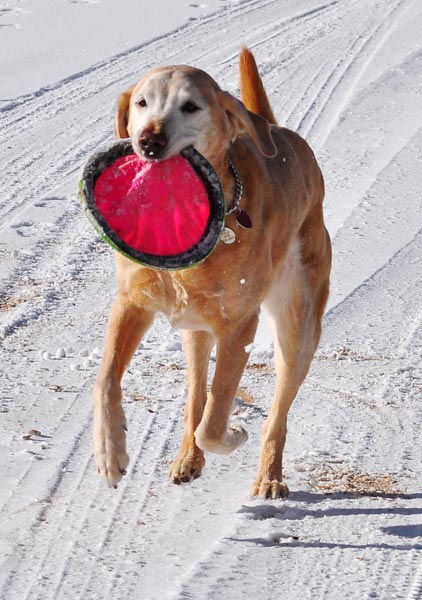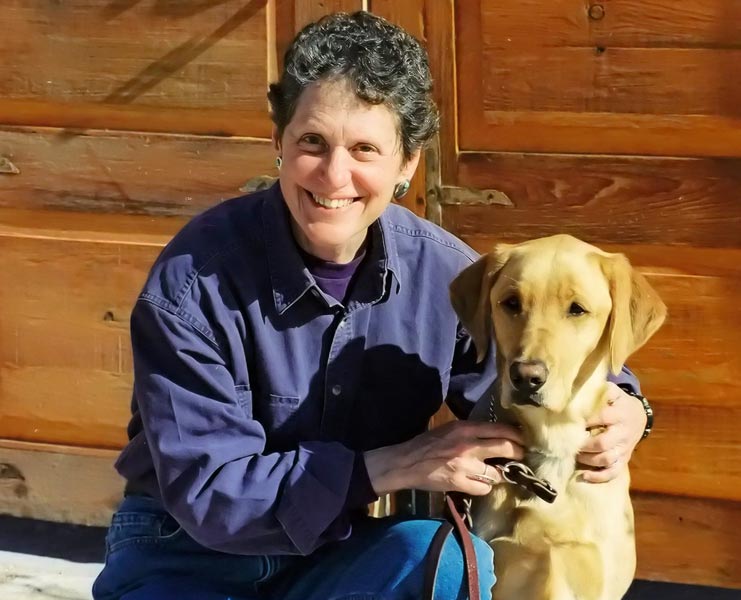


For over a decade, I have had the privilege of sharing my life with a guide dog, a Golden Retriever-yellow Labrador named Teela. During this period, the relationship between us has changed both of our lives. This is a book about being led by a dog to new places in the world and new places in myself, a book about facing life’s challenges outwardly and within, and about reading those clues—those deeply felt signals—that can help guide the way. It is also, more broadly, about the importance of intimate connection in human-animal relationships, academic work, and personal life. It is about the company we keep, about companionship, guidance, interdependence, and love.
In these stories, I describe how my relationship with Teela has had far-reaching effects—influencing not only my abilities to navigate the world while blind, but my writing, my teaching, and my sense of self. I explore my inner emotions as I walk with her, no longer facing the world alone but accompanied by her spirited presence, and I examine other intimate relationships in my life that have been enriched and supported by our bond. Yet these reflections are more than strictly personal. Throughout, I draw insights from my experiences that I hope may prove helpful to others—guide dog and service dog users, individuals with pets or those who also share their lives with animals, and readers interested in issues of intimacy and interconnectedness more generally. For, as these stories suggest, a relationship with a guide dog has much in common with other intimate connections, and the search for self that it encourages is akin to other individual quests for competence, comfort, and self-worth. –Continue reading the Introduction (pdf) or Introduction (docx)

Teela was born at Guide Dogs for the Blind in San Rafael, California, in November 2003, one of a litter of ten puppies, seven of whom graduated from guide dog training to be placed with a blind user. Her father was a Labrador Retriever, reddish-blond in color, her mother a red-blond Golden Retriever. Teela is tall—a Golden Retriever-Labrador cross with short, strawberry blond fur, lively in temperament from the start. Her first eight weeks were spent in the guide dog puppy enclosures, where she was with her littermates and intensively socialized with people and objects of the world with which she would need to be familiar.
A family in Weaverville, California, raised her for her next fourteen months. She was initially a 4-H project of the daughter’s, but she was socialized by the parents as well. The mother, an elementary school teacher, took her daily to her classroom; the father, a firefighter, and the son roughhoused with her. Her raisers socialized her according to strict rules for what is expected of a guide dog—habits of obedience, of relieving on schedule, sitting, lying still, and adapting to multiple environments—the home, the stores and offices of Weaverville, going camping and hiking with them. –Continue reading from Chapter 2, When She Was Young (pdf) or Chapter 2 (docx)
I have pictures in my basement that I am framing from trips that Hannah, Teela, and I have taken. As I work to align the first and then the second photos in their mats, putting my head down close to each, straining to see the edges of each large glossy print, I think about myself: Why am I doing this? Shouldn’t I just give up? What am I, a blind woman, doing matting and framing photographs, even taking these pictures to begin with and trying to appreciate them? It is so hard to see them, to keep the edges straight. I should not be doing such vision-intensive work. It isn’t right. I am ready to cry.

I so often want to give up when I feel frustrated by my lack of eyesight—when I feel that I am useless, or disabled, that I have nothing of value to offer, or that I am not doing what I should—what a blind woman or a person my age should be doing, or what someone else might be engaged in. My lack of sight complicates all my self-doubts and is an impediment. But against any negatives emerging from it, overwhelming them for me is a sense that I have been given a gift—a new lens through which I now see. My vision, though imperfect and full of blind spots, is revealing, opening new worlds for me, creating a distinct blind point of view. My challenge is to use my new perspective to see what otherwise I might not, to use it to contribute to the insights of others and to help me value myself rather than fueling my self-doubts. –Continue reading from Chapter 5, Framing My Pictures (pdf) or Chapter 5 (docx)